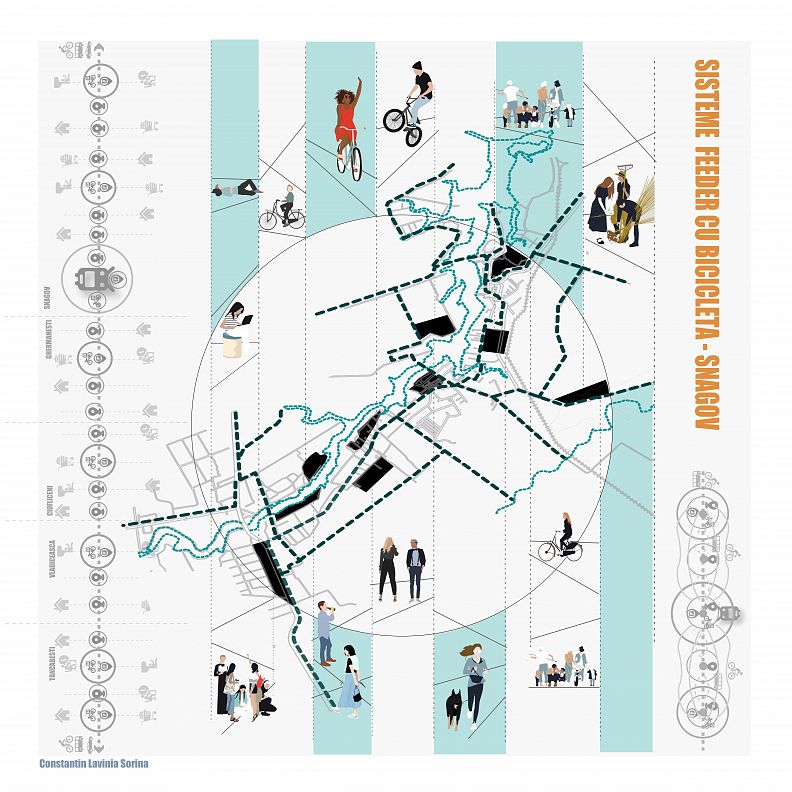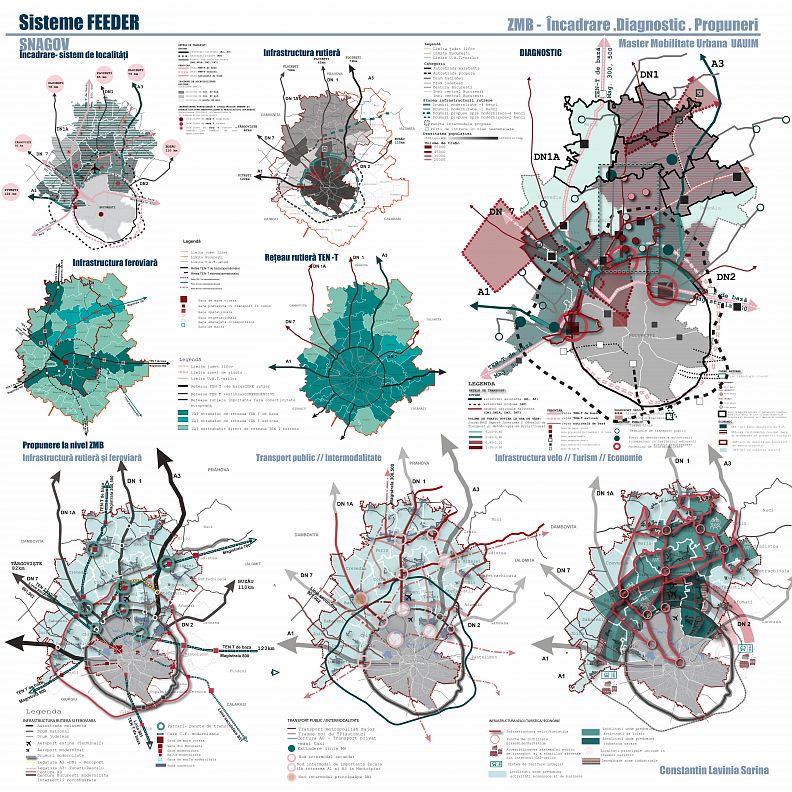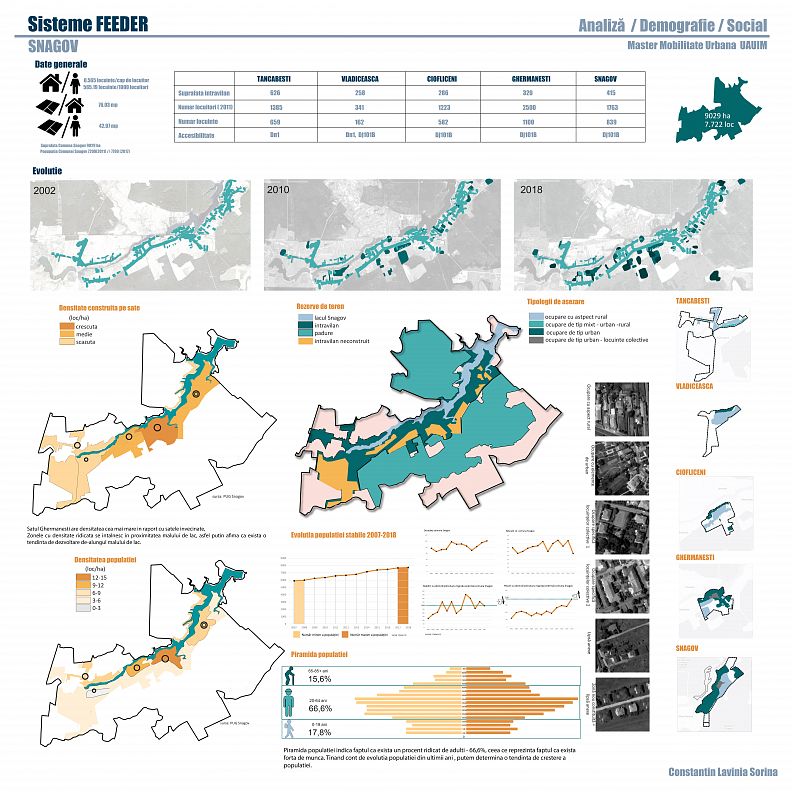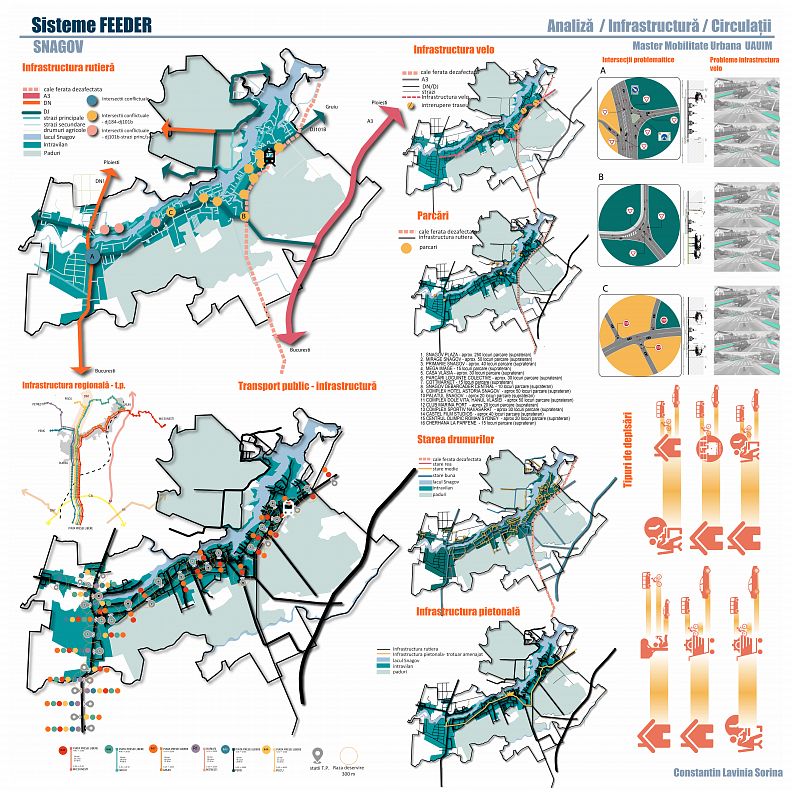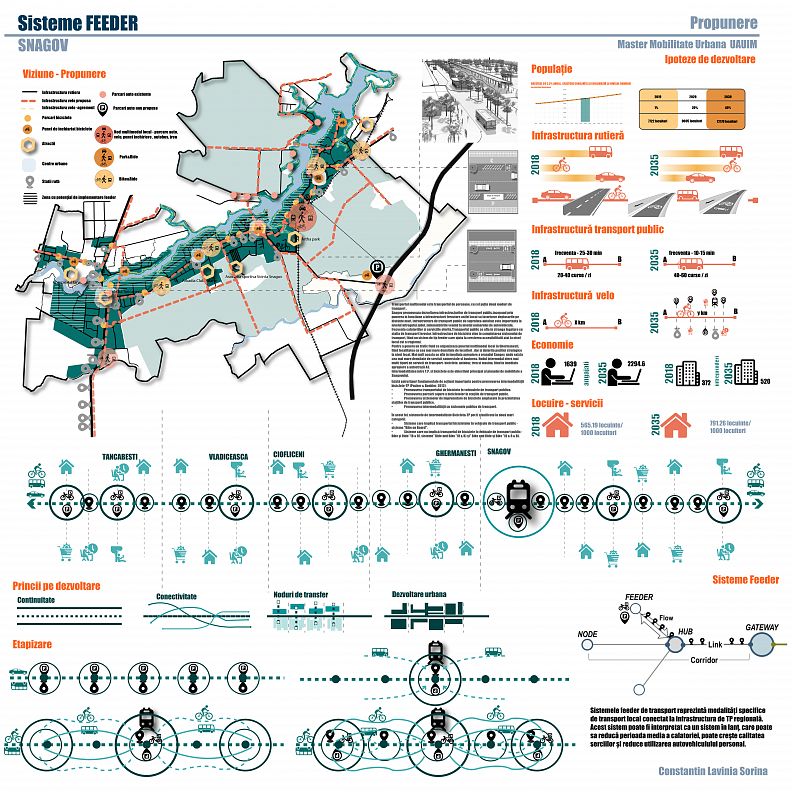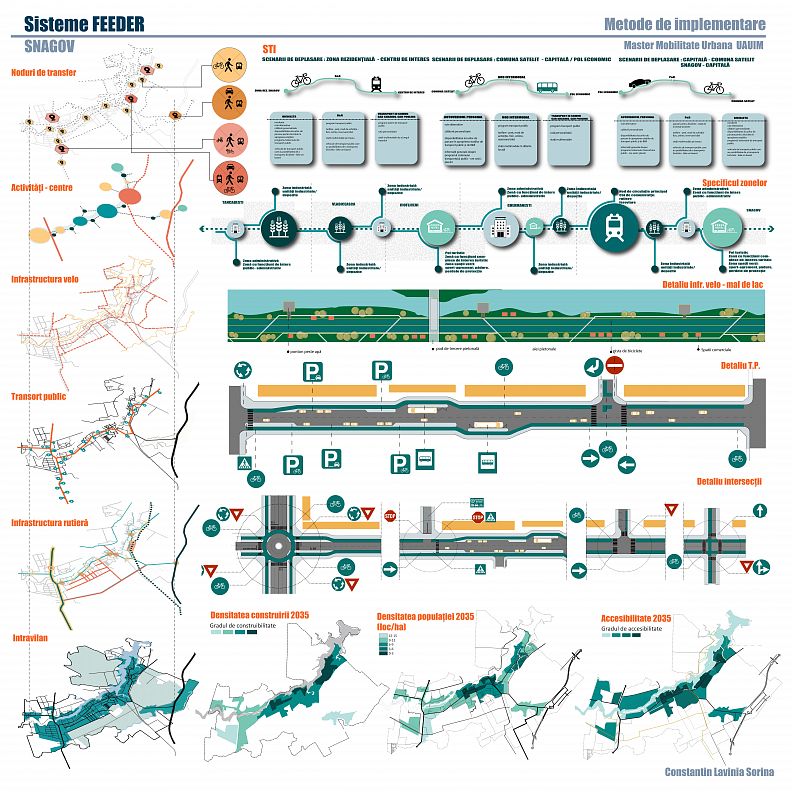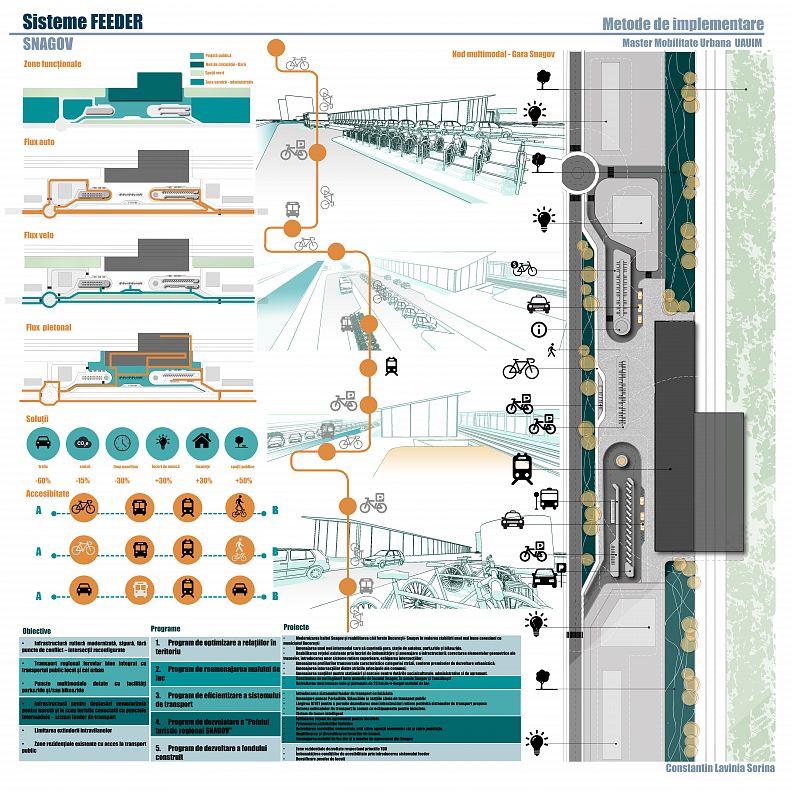Bike feeder system in Snagov

Project idea
The introduction of sustainable alternative transport systems for access to public transport allows to reduce congestion and its side effects. First, these alternatives encourage lowering the use of personal vehicles, which would lead to lower levels of toxic emissions. Also, connecting and combining several types of transport for long distance travel can allow the creation of a complex transport system, where the modes of transport can complement each other.
Project description
The bicycle feeder systems represent specific modes of local transport connected to the regional TP infrastructure. This system can be interpreted as a chain system, which can reduce the average journey time, increase the quality of services and reduce the use of the personal vehicle. The promotion of bicycle services as feeders as a transit system refers to the creation of a multimodal network.
Commuting is a roundtrip that a person, whose job is in another city than the one in which he has a stable home, has to make every working day for work. Commuting greatly influences urban traffic conditions. The journey "work - home" now involves a long time spent in traffic and high fuel consumption, which leads to increased pollution. In order to decongest traffic and mitigate air pollution, it is desired to promote and prioritize public transport systems.
This paper analyzes the process of optimization of the integrated operating system of the regional public transport system - train and bus and the integration of the bicycle feeder system in the metropolitan area, taking as a detailed study area the town of Snagov, where the aim is to introduce the bicycle infrastructure as an alternative transport mean.This research proposes a transit system that combines several modes of transport - bus, train, bicycle and car, by creating multimodal nodes, park & ride, ride & bike, park & ride & bike to provide the necessary comfort to the users and to help change the modal distribution in favor of public transport and non-motorized transport.
The feeder systems are meant to link residential areas, railway service areas or major public transport infrastructure. The bicycle is an accessible, cheap, clean and healthy way of travel. We need to encourage lifestyle changes that can improve our health, reduce gas emissions and our dependence on fossil fuels.
Technical information
The project reflects all of the above in 8 images that reflect the existing state of the city and the strategy behind the process of implementing the new feeder system that helps increase the mobility at an urban level.
